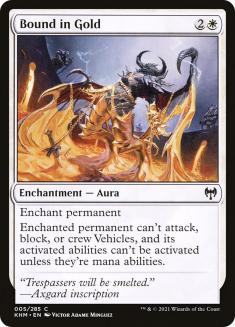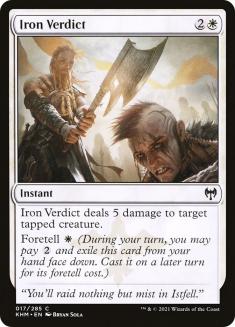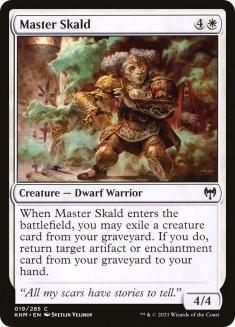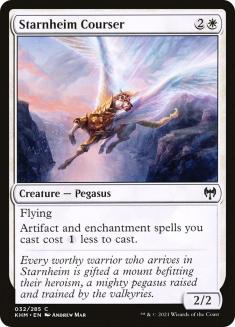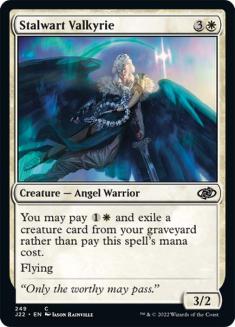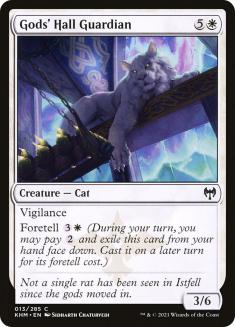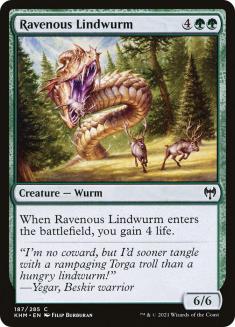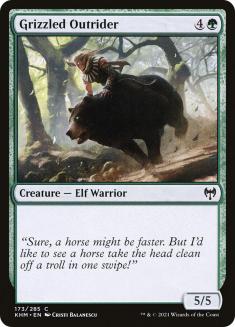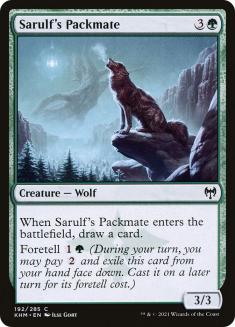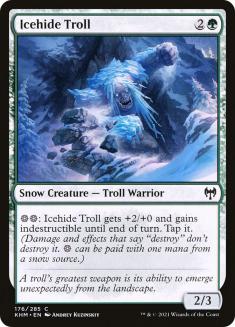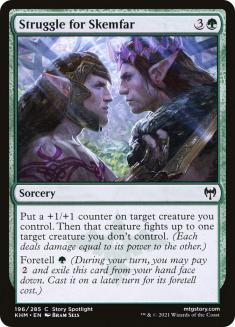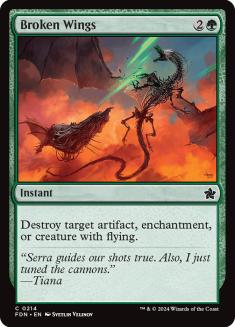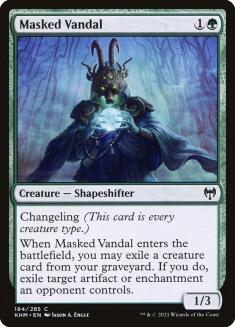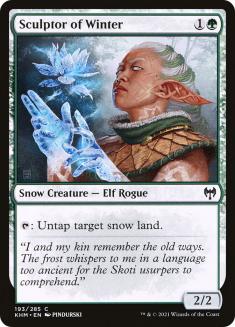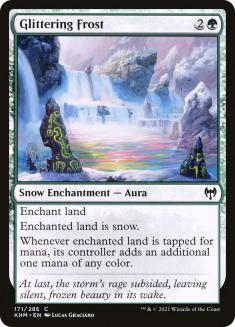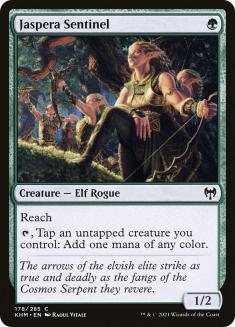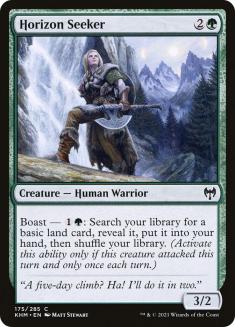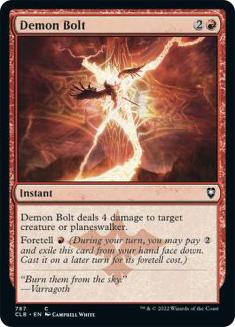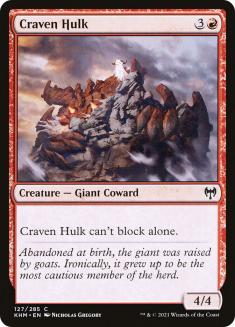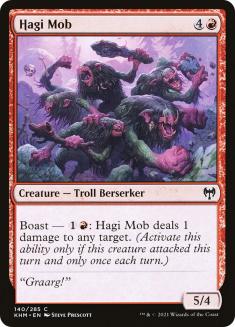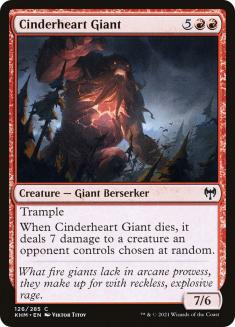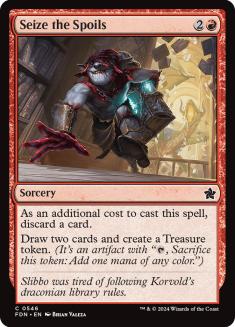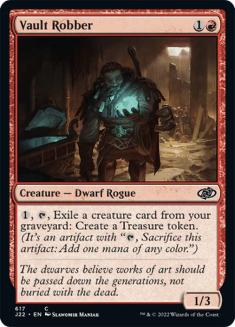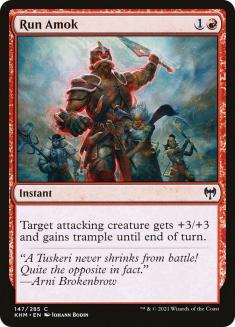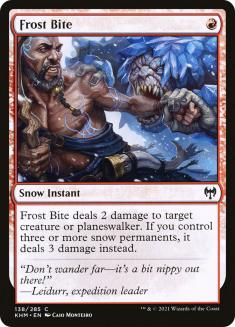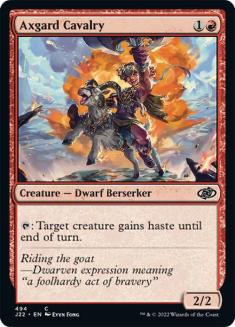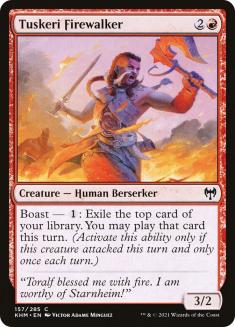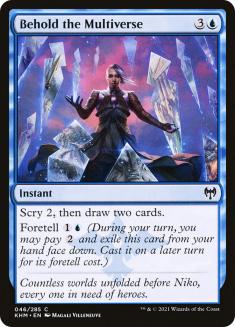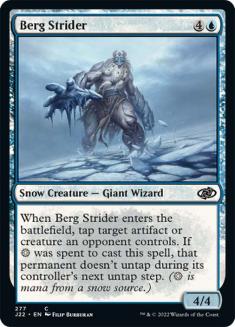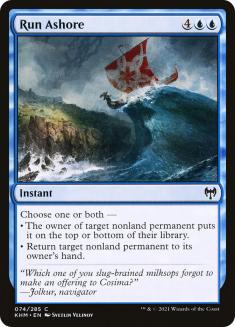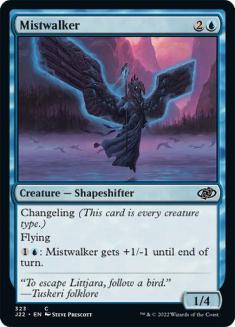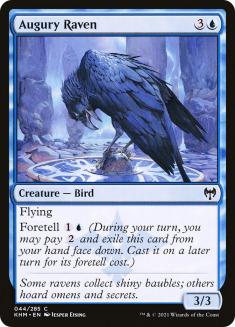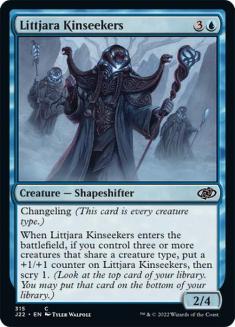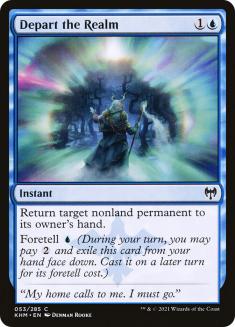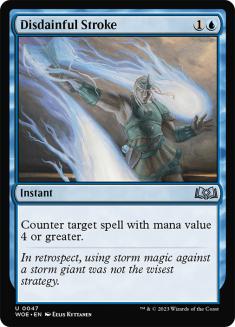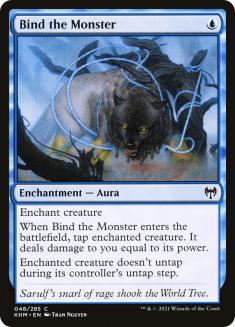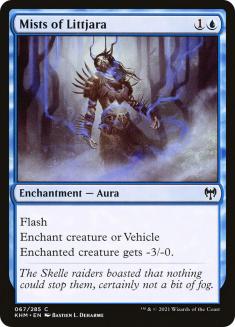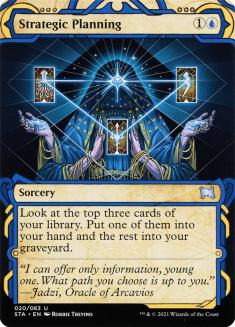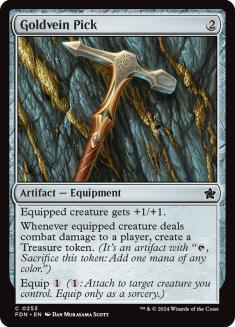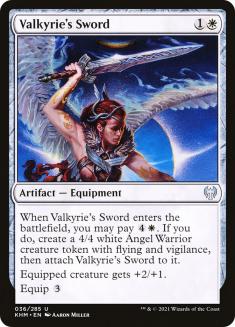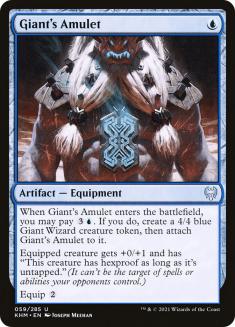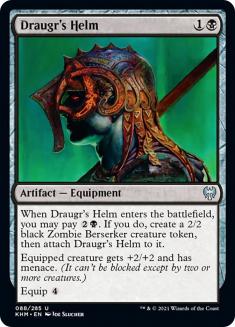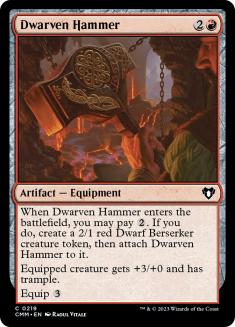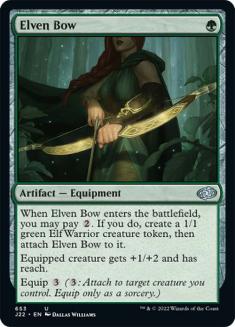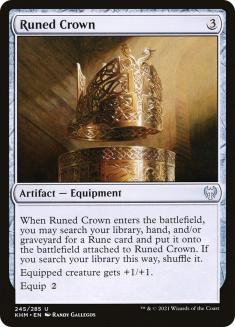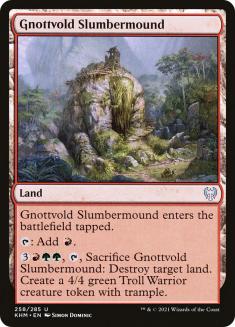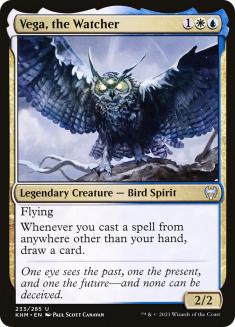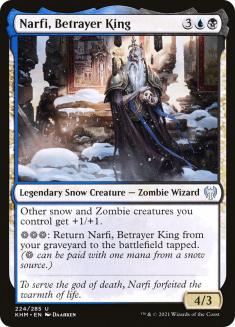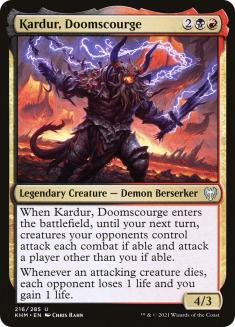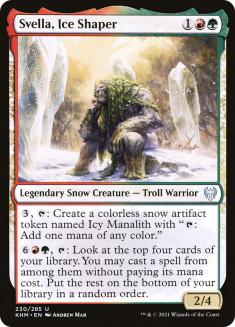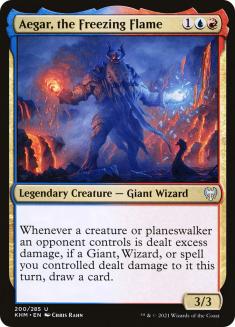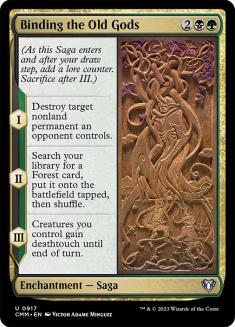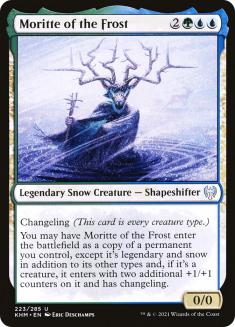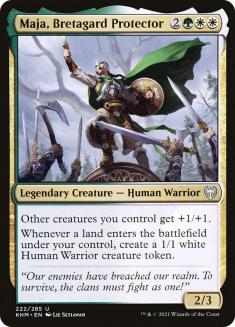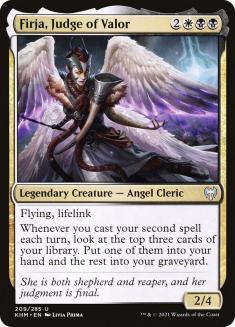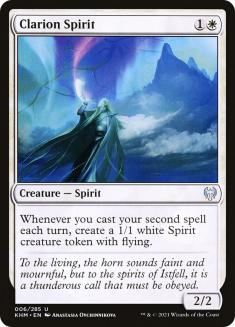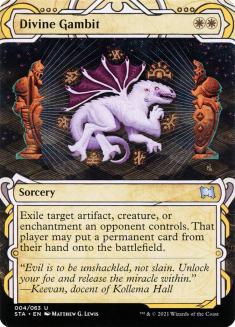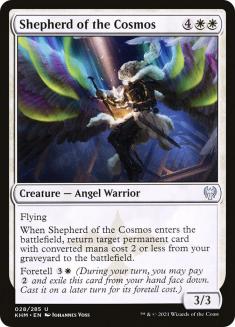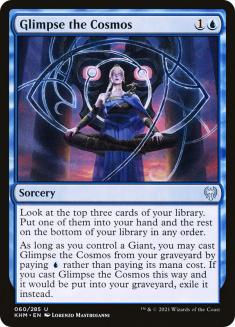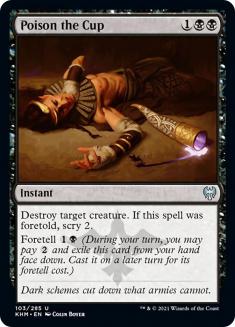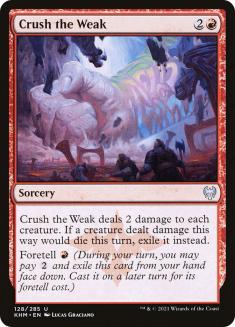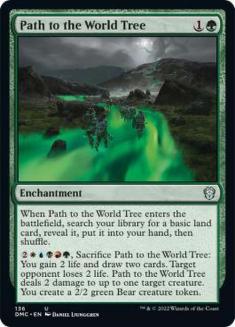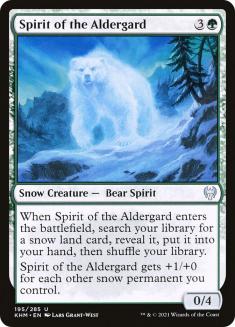This weekend we’ll be able to play high stakes Sealed Deck on Arena for the first time, and I’m among the many players who are excited by the triumphant return of competitive Limited Magic. Today I’m going to tell you everything you need to know to have the best chance in the event regardless of your experience with Kaldheim limited.
Which Queue to Join?
The most common question I’ve gotten is about the first decision you’ll have to make — should you play Best-of-3 or Best-of-1? You can enter either, but despite having the same cost, they have different structures. In Best-of-3, you’ll need four wins without any losses to qualify to play on Sunday while you’ll need seven wins in Best-of-1, but you’re only eliminated with your third loss. If you win half your matches, you’ll qualify in Best-of-3 6.25% of the the time, while you’ll qualify in Best-of-1 8.98% of the time. If we assume that you’re an exceptional player rather than an average player, and you win 70% of your matches, you’ll qualify 24% of the time in Best-of-3 and 46.28% of the time in Best-of-1. It’s easier to qualify for the second day in Best-of-1 unless you think for some reason you benefit much more than the average person from playing a match rather than a game, which would be weird.
So should you play Best-of-1? If you win half your matches, you’ll lose an expected 3,978 gems in Best-of-1 and 3,312.5 gems in Best-of-3, meaning just based on your expected gems in Day 1, Best-of-3 is better. If you factor in your expected value on Day 2 and your chance of making Day 2, the value is almost identical if you win exactly half your matches both days (technically Best-of-3 is very slightly better). If you win more than that, your Best-of-3 gem equity on Day 1 gets quite a bit better than your Best-of-1 gem equity on Day 1, but because you’re more likely to qualify for Day 2 where there’s more value, you’re better off playing Best-of-1 even if you only expect to win half your matches on Day 2 despite your higher win rate on Day 1.
If you’re busy on Sunday and can’t play no matter what, but you want to play in the event on Saturday anyway, you should definitely play Best-of-3.
If you’re planning to just keep entering until you qualify for the second day and you want to find the cheapest way to do that, if you win half your matches you should expect to spend 44k gems playing Best-of-1 to qualify, which will be much better than the 53k it would cost in Best-of-3. However, if you win 70% of your matches, it would cost you 7k in Best-of-1 versus only 4k in Best-of-3, after factoring in the costs offset by your prizes, so if you win a lot, you might ultimately be better off in Best-of-3, but you’d need to win around 57% of your matches or more for that to be a favorable choice.
Ultimately, it’s a close choice, and I think it’s totally reasonable to just choose based on whether you like playing Sealed Deck with sideboarding.
Once you’ve chosen which structure to enter, we get to the interesting part:
Building Your Deck
Unlike Draft, Sealed Deck isn’t self-correcting. If some colors are weaker than others, very few pools will be able to use the weak colors well, and you’ll play against the stronger colors much more often. Kaldheim is such a set.
Weaker Colors:
White
White in this format is very aggressive, in a way that really doesn’t lend itself well to Sealed. It has a lot of commons that are just bad cards, and a few reasonable aggressive creatures, but those aggressive creatures are extremely low-impact by themselves, and playing cards like that is dangerous in Sealed.
Battlefield Raptor is a card that stands out in Draft because it looks horrible, but actually plays pretty well in a lot of aggressive decks, particularly because it’s great with Goldvein Pick. The same is still true in Sealed, that if you end up trying to build an aggressive deck with Goldvein Pick, Battlefield Raptor can be a good part of that plan, but in other cases, you should avoid playing it. There are very few white commons that I think are relevant in Sealed:
These are the commons that I think can be substantially above replacement level for a common in this format. Master Skald is basically only good if you have some really strong Sagas, but if you do, it can be great. The other two cards are just solid removal spells, which are always welcome in Sealed.
I don’t think any of these are exceptional creatures, but they’re all at least fairly reliably going to be worth a card, so I wouldn’t be embarrassed to play any of them, which is more than I can say for the other white commons.
Six real playables and a handful of cards you can use sparingly if you have to isn’t a recipe for success in Sealed. If you open strong white cards, I recommend trying to splash them if possible rather than using filler white cards as a base color, and correspondingly, you should expect to play against white very rarely.
Black
Black has similar issues. More black cards are reliably worth a card than white cards, but they’re all at a fairly unimpressive rate. Feed the Serpent should be good, but the BB in its casting cost can be a real trap.
Stronger Colors
Blue, red, and green are all much better than white and black, and you should expect most of your opponents to be some combination of those as their primary colors, and you should expect a lot of decks to splash bombs in any color.
The best rule of thumb in Sealed is that you want to avoid playing low-impact cards. You want everything you play to reliably be worth a card and your top priority is to avoid giving your opponent virtual card advantage by letting them ignore several of your cards because, for example, they have a larger creature.
The reasoning is simple. Because more packs are opened in Sealed than Draft, players have more bombs. They also have access to more total removal spells if they prioritize them, which they need to do because there are more bombs. That means people trade cards more, which means games go longer. Players also can’t build strong aggro decks as often because they can’t select for a disproportionate number of aggressive creatures the way they could in Draft, and they need to prioritize making room for their bombs and removal.
If games last a little longer, but people still need to be judicious with their removal to save some for the opponent’s bombs, players will have time to cast their creatures, and bigger creatures will dominate smaller creatures. This is why the white creatures that I like are either very big or have flying. Green, red, and blue have larger creatures than white and black in this format, which give them an advantage.
While a lot of games of Sealed will be defined by rare and uncommon bombs that take over a game, there will also be a lot of games where those cards can be answered, and you’ll be left duking it out with commons. The commons also define the general landscape of the format. I’d like to look at some specific commons that I think define the general texture of Sealed, or that I think are particularly noteworthy.
Green
I’m going to start with green, because green will be the base of most sealed decks in this format.
These are the defining big creatures of this Sealed format. A very large portion of all of these cards that are opened should be played because green is so good and you want to play these high-impact, good-rate creatures.
Sarulf’s Packmate is the best two and three-drop in the format, as it allows you to spend mana in the early-game productively to avoid falling behind without playing any low-impact cards.
Icehide Troll can absolutely dominate any game that goes too long, and you might want to play it even with a relatively light number of snow sources because your opponents will still feel pressure to kill it on sight rather than risk you finding your second snow source.
Grizzled Outrider and Ravenous Lindwurm are big enough to win fights and take over the battlefield. Ravenous Lindwurm’s life gain is extremely relevant.
These are the green common removal spells. Because green is heavily played and removal is good, these cards should all see a lot of play. There’s some chance that Broken Wings will be underrated or included less often than the others, but it’s strong enough to play. Struggle for Skemfar is one of the cards that really pushed toward rewarding large creatures, as you need to have a creature large enough to fight whatever you need to kill.
These are the ramp and fixing available to green. Sculptor of Winter and Glittering Frost are much better than Jaspera Sentinel and Horizon Seeker. For the most part, you should try to avoid Jaspera Sentinel, a card that has actually grown on me in Draft, because it’s exactly the kind of low-impact card that’s easy to blank in Sealed, while Horizon Seeker has seemed pretty good in Sealed even though I don’t like it in Draft.
The other green commons are mostly replacement level; these are the cards that should make up most of your green decks.
Red
Red is unusual in Kaldheim in that it has substantially larger common creatures than it does in most sets. Between that and a good amount of removal, it’s remarkably strong in Sealed.
These are the premium red commons that people will often try to splash even if red isn’t one of their main colors. Squash isn’t a great rate if you don’t have a Giant, but the fact that it’s a clean answer to Ravenous Lindwurm or almost any other creature means that it’s usually worth it anyway.
Here’s that fat I was talking about. Cinderheart Giant reads like the kind of common that just costs to much to ever actually cast, but that’s not the reality. Games go long and there are a lot of nonland mana sources. Players hit seven mana in most games. I’ve been impressed by how impactful Cinderheart Giant is in Draft, and it’s only better in Sealed. Hagi Mob and Craven Hulk are just solid rate high-impact threats. Nothing too special, but good cards in include in your sealed deck.
These are weak cards in Draft that I’d expect most players to overlook in Sealed. In a format where you’re looking to play most of your more expensive spells and splash off-color bombs, you shouldn’t underrate the value or making Treasure tokens. Seize the Spoils is quite good if red is a primary color and you’re interested in a questionable splash or a very large top end, and Vault Robber is adequate filler that can actually be pretty good if you have some ways of filling your graveyard, like Seize the Spoils.
These are good cards in Draft that you don’t want to get carried away with in Sealed. If you know you’ll be aggressive, you’ll still play Run Amok, but you want to be careful, as a lot of Sealed decks will be on the back foot a good portion of the time, and you can’t afford the dead card.
I’ve been talking about how you want to play big creatures and not small creatures, so it shouldn’t surprise you that I think Frost Bite is pretty weak. If you’re playing an aggressive deck, a trick would serve you far better, as it would allow you to attack profitably through a large creature. If you’re playing a slower deck that looks like it might struggle early, not have enough flyers, or very reliably have three snow permanents, it’s fine to maindeck Frost Bite, but I would rarely be excited about the card.
I like these cards because they’re relatively cheap creatures that can easily have an outsized impact on a game. You need to play some cheap cards, and these are good cards that fit that bill.
Blue
This is the most common draw to blue. It’s strong and easy to splash, and goes an extremely long way toward making whatever you’re trying to do work. If you open Behold the Multiverse, go out of your way to play it.
These are huge tempo swings that can easily win games. Run Ashore is an overperformer in Draft that you definitely want to keep an eye on in Sealed. It’s a very easy two-for-one when it saves one of your cards and puts an opposing threat back in your opponent’s deck. The best version of that play is when you return your own Saga in response to the third chapter (be very careful to set a main phase stop in advance when trying to do this on Arena). It can also remove two attackers or two blockers to massively swing combat. Don’t sleep on this card and do watch out for it if your opponent has six mana.
Berg Strider is just incredible. Meaningful body and the ability is extremely high-impact any time the game isn’t completely gridlocked.
Blue has much better bodies in this set than it usually does, which is what makes it such a solid base color.
Disdainful Stroke is an easy answer to a wide range of possible bombs. You’ll generally want to play Disdainful Stroke in most normal Sealed pools.
Depart the Realm gains a lot of value due to the prevalence of Struggle for Skemfar specifically, as countering the fight by bouncing your opponent’s creature is a huge blowout. It’s a little narrow, so I’d be a little more careful about playing it, but if you’re playing Best-of-3, you should certainly track how many fight spells your opponent plays to figure out if you want this.
If you’re absolutely desperate for removal, these cards exist. You should go out of your way to avoid playing them maindeck if you have other options available. Ravenform is likely the best if you need to play something like this.
This is a reasonably productive use of early mana that helps find bombs, fix your mana, and fill your graveyard. I don’t need a lot of cards that look to use my graveyard in some way to convince me to play this.
Goldvein Pick has garnered a lot of attention lately as an underestimated star of aggressive draft decks, and some players have used it as a basis to splash colors into aggressive decks or as a piece of fixing in certain multicolor decks. It’s a powerful card that I do recommend using in aggressive Sealed decks or Sealed decks with a lot of cheap or evasive creatures, but keep in mind that in general, I don’t advocate building Sealed decks this way, and I don’t think it’s correct to go out of your way to make it work. Despite this cards strength, you should not always play it, even if your deck would theoretically like to produce treasure. You need this to work in the early game reliably.
Uncommons of Note:
The first thing I’d like to note is that all the uncommon Equipment is great (If you have a Rune for Runed Crown, but you really only need one). All the colored Equipment gives you a creature that’s roughly worth what you paid for it, and then you’re left with a piece of Equipment that can move around, which is a great way to generate an advantage over a long game. All of these cards are big draws. Runed Crown replaces itself while giving a powerful piece of Equipment. Even if you draw your Rune before you draw the Crown, you can often enchant a creature and trade it off, then use the Crown to get the Rune from the graveyard to make sure you get your card.
The uncommon lands all offer meaningful abilities and you should generally play any that you can activate. I’ll even play lands that I can only activate with Treasure if I would be playing a basic land of the same color instead and my deck is reasonably good at making treasure.
Every color pair has a gold Saga and a gold Legendary creature, and most cards in these cycles are very strong, though there are some exceptions. You should generally avoid “double splashing” anything, meaning playing a gold card where you have very few sources of both colors in its casting cost, but this is a list of cards in this cycle that I’d usually hope to splash if I’m playing one of the colors:
These are similarly strong, but you can only splash in one direction:
Arni Slays the Troll, Fall of the Imposter, Harald, King of Skemfar; and The Trickster God’s Heist are all worth splashing for under the right conditions, like if they play well in my deck, but there are some decks where I just won’t be interested in them.
White Uncommons of Note
Clarion Spirit is extremely strong, but it can be a trap, since it might convince you to play more white than you should. Proceed with caution.
The casting cost is going to keep this out of most decks, but people often ask what I think of the card. I think it’s very good in a control deck with a lot of other hard removal so that you can kill whatever they play or hold this for the very late-game, but very bad in an aggressive deck that’s looking to clear blockers, therefore, it’s very rare that you find a chance to use it because of its casting cost.
This is a very good white card to splash.
Blue Uncommons of Note
Avalanche Caller is just a bomb. Highly splashable. Early play that dominates late games, a little weird this isn’t rare.
If you have any Giants at all, you should play this.
Black Uncommons
I don’t really think any of the black uncommons are particularly noteworthy. Splash Poison the Cup. If it’s easy, you might splash Vengeful Reaper, but don’t go too far out of your way, it’s not that good.
Red Uncommons of Note
You’re not very likely to play against the decks that this is really great against in Sealed. If this kills almost none of your creatures, it’s a fine playable, but for the most part, I’m happy thinking of this as a sideboard card.
Red’s uncommons are remarkably unimpressive in Sealed as a whole.
Green Uncommons of Note
It’s kind of amazing how much better blue and green are than the other colors when you really look at their commons and uncommons, especially in Sealed.
Both of these cards are amazing and they’re cards you really hope to open, as they make splashing much easier. If there’s any way at all in your deck that you can activate Path to the World Tree, you should almost certainly play it.
The other green uncommons aren’t especially noteworthy, but they’re all solid.
Conclusions
There will be two-color aggressive Sealed decks in any given color pair, but a vast majority of your opponents will be base green, and they’ll usually have multiple other colors. If they aren’t green, they’ll still usually be blue and/or red. If your opponent is playing a lot of black or white, you should start thinking about which bombs they have, and in particular, you should probably watch out for Doomskar or Blood on the Snow if they aren’t very aggressive.
You want to make sure you can spend your mana productively in some capacity on Turn 2 and/or 3, but you don’t want to play random weak 2/2s to do it. Foretell is your friend here. Remember that the format is defined at common by large green creatures and that Icehide Troll dominates that metagame if left unchecked.
Making sure your cards matter is always the safest way to proceed in Sealed.


